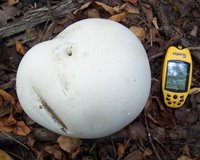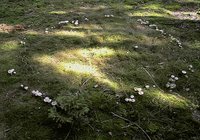Spring arrives with a sour-sweet smell that arises from the brooks and swamps as soon as the snow melts. It comes from the rotted leaves and roots of last year’s plants that will feed this year’s growth.
Flowers appear, and you can almost tell the part of the month by the fragrances – the early Andromeda, tulip trees, magnolias, mustards, lilacs, and rockets. Like the season, they are fresh, sweet, celebrating rebirth. Then come the rich, heady scents of summer – the wild roses, clovers, milkweeds, pokeweed, and Queen Anne's lace. As summer wanes into fall, the goldenrods and Joe-Pye weeds begin filling the air with spice – scents of anise and vanilla.
And then the leaves begin to fall, offering an earthy but pleasant aroma of decay, only to be covered with the snow. Snow has a scent of its own and its coming on the wind is easily forecast with a good sniff.
The scents of the seasons are a calendar for the nose. Enjoy the latest page!







